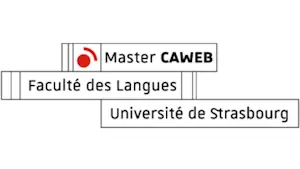Emerging Technologies : Exploring New Opportunities for Immersive Art Experiences

Immersive art is an artistic expression that aims to create unique experiences for viewers. It goes beyond traditional art forms, including painting and sculpture, to create an interactive and engaging experience. Over the years, new technologies have revolutionized the way we experience art. These technologies have created new opportunities for immersive art and have made it more accessible to a wider audience.
In this blog post, we will explore new opportunities for immersive art experiences.
Virtual Reality
Virtual reality (VR) is an emerging technology that has the potential to transform the art world. VR can create a fully immersive experience for the viewer, where they can engage with the art in a way that was not possible before.
The Ministry of Culture in France and the Grand Palais have partnered to create the Pompeii exhibition. Users are able to discover from home a reconstruction of a period house in its current state, then in its original state, before the eruption of Vesuvius in 79. They can explore this “virtual” space from all angles by clicking on the arrows with their mouse, or by moving the screen of their smartphone around the house.
VR can also be used to create collaborative art projects, bringing together artists from different parts of the world to create a virtual art piece.
Artificial Intelligence
Artificial intelligence (AI) is an emerging technology that can be used to improve immersive art. AI can be used to create intelligent agents that can interact with viewers and respond to their emotions. This technology can be used to create chatbots, which can act as virtual tour guides, providing information about artworks and answering questions. AI can also be used to create algorithms that can generate artworks based on the viewer’s preferences.
This technology can also be used to create personalized artworks that are tailored to the viewer’s tastes.
Augmented Reality
Augmented reality (AR) is an emerging technology that can be used to improve immersive art. AR can superimpose virtual objects onto the real world, creating an interactive and immersive experience. This technology can be used to create installations that can interact with the viewer’s environment. For example, an art piece can be projected onto a building, and the viewer can interact with it using their smartphone. AR can also be used to create digital artwork that can be displayed in public spaces. For example, the immersive exposition Eternal Mucha by the Palais Immersif in Paris offers high definition projections, an original musical and olfactory universe and interactive devices around the famous artist.
3D Printing
3D printing is a technology that has been around for a while, but it is still an emerging technology that can be used to enhance immersive art. 3D printing can be used to create sculptures and other artworks that were not possible before. With 3D printing, artists can create intricate and complex designs that would be impossible to make by hand.
This technology can also be used to create replicas of famous artworks, making them more accessible to a wider audience.
In conclusion, new emerging technologies have the potential to revolutionize the way we experience art. VR, AI, AR, and 3D printing are just a few examples of how technology can be used to improve immersive art.
These technologies can create unique experiences that engage the audience and create a lasting impression.
Immersive art is an exciting and rapidly evolving field, and we look forward to witnessing how technology will shape the future.
Discover now how we can use digital technology to create free access to culture.






